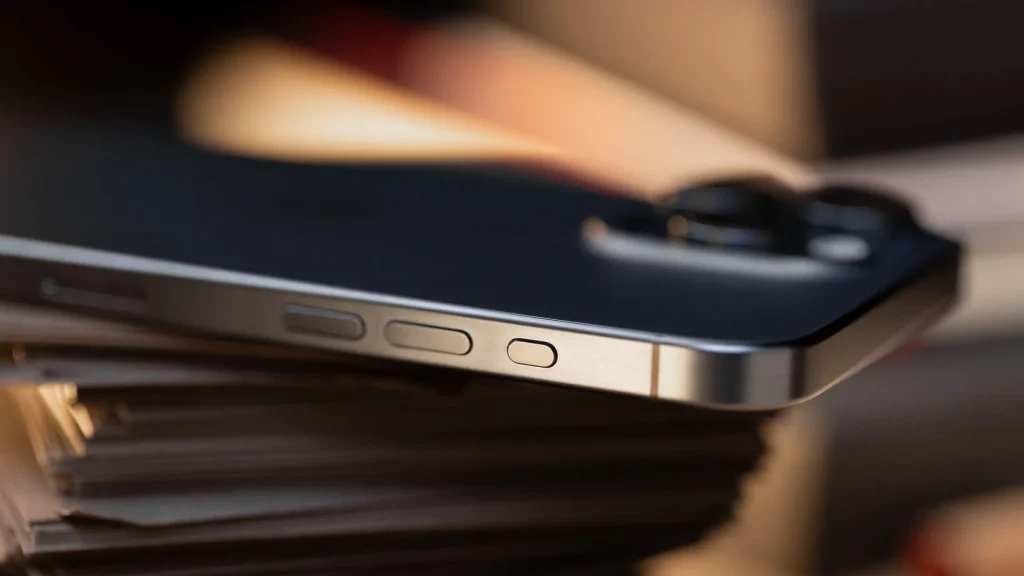Introduction: A Cultural Phenomenon Unfolds
The iPhone 16 has graced our lives for two months now, igniting fervor not solely for its technological prowess but for the unexpected revolution surrounding its camera control button. While expectations soared around Apple’s anticipated artificial intelligence innovations, disillusionment quickly set in due to long wait times and unconventional implementation methods. Instead, it is this unassuming button that has proven to be the focal point of the current mobile accessories landscape, sparking a culturally charged conflict among manufacturers and users alike.
The Button: Complexity Embedded in Simplicity
In the age of modern smartphones, users have adapted a ritualistic approach upon getting a new device, often prioritizing the acquisition of a protective case. For many, the iPhone 16 has been no exception. However, the introduction of the innovative camera control button posed unique challenges for case designers and manufacturers.
To understand the complexity of this button, it is essential to delve into its intricate design: composed of sapphire glass, a pressure sensor, and a mechanical structure, it responds to a range of touch inputs—sliding, pressing, and tapping. The interaction mechanism can be divided into two fundamental approaches: the conventional mechanical click and the capacitive touch response enabled by the incorporated pressure sensor.
While engineers have long tackled the mechanical aspect of button design—often establishing tried-and-true methods involving various materials—applying the capacitive touch functionality proved to be an entirely different beast.
Market Demand: The Surge and Divergence
Upon the iPhone 16’s launch, manufacturers quickly identified a burgeoning market for cases equipped with the camera control button. After all, Apple’s own official cases showcased similar designs, setting a benchmark for safety and functionality. The MagSafe silicone case included a sapphire glass layer and a conductive component to ensure smooth operation.
The sapphire glass used in Apple’s cases exhibits impressive durability, rated at approximately 2000 HV (Vickers hardness), far exceeding that of standard glass and rivaling even stainless steel. This necessary protection comes at a steep price, with estimates suggesting that the material costs for the sapphire glass found on the iPhone 16’s camera control button could range between $8 to $15.
For third-party manufacturers, this financial burden poses significant challenges, particularly as they strive to meet consumers’ desires for affordability without compromising functionality. Many opted to use substitute materials, but these alternatives often fell short, hampering the seamless experience users expect.
Disillusionment and Shifting Trends
As October rolled in, the initial enthusiasm for button-integrated cases began to wane. Users quickly discovered that the experience of using these cases was far from ideal. Some chose to forego the camera control button altogether, arguing that if the AI features were not reliable, the button served little purpose.
Others—driven by an investment in their devices—resisted abandoning the button, leading to a reliance on third-party manufacturers to produce cases that adhered to Apple’s design while also employing glass surfaces and conductive layers for optimal interaction.
Unfortunately, many of these cases encountered significant issues—such as peeling glass and unresponsive buttons—leading to yet another wave of dissatisfaction. The introduction of “avoidance stickers” exacerbated the problem by revealing that dust accumulations could leave marks on the button itself, causing an outcry among consumers who valued their iPhones’ pristine aesthetic.
The Rise of the Keypad Film: An Innovative Solution
With frustration mounting over traditional protections, a novel solution emerged: keypad films. These coverings, reminiscent of screen protectors, captured the imagination of the consumer market. Users began advocating for a combination of open-design cases and keypad films to ensure that the camera control button remained functional while preserving ease of use.
Manufacturers of keypad films seized this moment, emerging as unlikely victors in a chaotic landscape where cases struggled to find their footing against consumer expectations.
Navigating the Future: Industry Dynamics
At this juncture, four primary approaches have emerged in the case market:
- Full Coverage: This method completely obscures the camera control button, acting as if it does not exist.
- Limited Functionality: Some designs retain only the mechanical features of the button, disregarding touch sensitivity.
- Open Design: Combining an exposed button with a keypad film seems to be a balanced approach, catering to user experience.
- Innovative Development: A renewed focus on capacitive cases attempts to address the readability and durability issues previously observed.

While these strategies offer varying degrees of success, manufacturers must tread carefully. Opting for complete coverage may inhibit users’ access to the advanced features that define the iPhone 16, a choice reminiscent of the AI discussions circulating around Apple’s technology.
As philosopher Friedrich Nietzsche aptly stated, “In the face of difficulties, retreating will only lead us to be pursued by greater threats.” The conundrum created by the camera control button stems directly from Apple’s design choices, which some perceive as an abdication of responsibility to the user.
Conclusion: User Experience in the Spotlight
Recent efforts by Apple to improve user productivity—emphasized by initiatives such as Focus Modes—highlight a deeper intention to guide users’ attention. However, the complexity of the camera control button transforms the iPhone 16 into an irony-laden device, compelling users to allocate mental resources to an interface element that should enhance their experience rather than inhibit it.
In a fast-evolving digital landscape, the respectful relationship between users and their devices remains paramount. Users are justified in their desire to cherish and protect their investments, ensuring that the evolving narrative surrounding the iPhone 16 continues to captivate imaginations while prompting industry innovations.


















































Discussion about this post